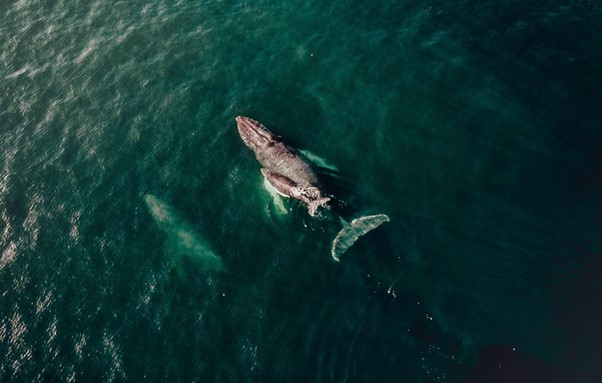Do you know where sharks live? Everywhere – in the water! Everyone knows sharks live in the water but many of you did not know much about their habitat, there are about 500 species of sharks and there is not specific atlas which shows that where you can found them but you can locate them in all the oceans of the planet – the Pacific, Atlantic, Artic Southern and Indian ocean, some species of sharks also preferred living in the freshwater seas, lakes and rivers.
Let’s visit all the places to witness the presence of sharks in different habitats!
Where do sharks live?
Sharks live everywhere in the deep water! All over the world’s oceans, different species of sharks live in various habitats. There are many species of sharks that love to live in the seas and rivers as well. You can find most of the sharks swimming at the average depths of 2000 to 3000 meters, some species may thrive along the floor of the oceans that is challenging but can be seen.
Are they everywhere?
Yeah that’s right – you can witness sharks everywhere, even in those localities where you cannot spot them normally. They continue to migrate from one place to another and can travel long distances in search of food. Sharks live in the oceans but according to the reported data about 70% of oceans are free of sharks because of their migratory behavior. Moreover, some species of sharks roam as a result of devastation of their natural habitat by human actions or pollution.
Common habitats of sharks
Sharks are found living in a variety of habitats. Some of the common territories of sharks have been listed below where you can probably catch them:
1: Estuaries
Estuary is the locality where rivers and oceans meet – the mixture of freshwater and saltwater, you can find many species of sharks in this area, common species that can be found here include Sandbar sharks, Angel sharks, Lemon sharks and Tiger sharks. In estuaries, mangroves swamps are the most favorite region because sharks can easily find food for them in mangroves like small fishes, crabs and shrimps. Moreover, the mangroves provide shelter to the newly born baby sharks from the predator and the harsh environmental conditions.
2: Coral reefs
About 25% of the sea creatures live in the coral reefs, shark species such as Zebra sharks, Grey reef sharks, Black-tip reef sharks and Caribbean reef sharks are found living around the coral reefs. They mostly feed on crabs, squids, lobsters and small fishes. They are mostly nocturnal – search prey at night and spend the entire day resting at the floor of the ocean.
3: Deep Ocean
Shark species such as Goblin sharks, Frilled sharks, Cookie-cutter shark, Ninja lantern-shark and Greenland shark are the prominent creatures of the deep oceans. It is one of the least explored regions with respect to sharks habitat because sharks in this area live at the depth of 2.5 miles or even more, they are rarely spotted by humans or sometimes confused due to their resemblance with the eel – having dark brown coloured long bodies.
4: Open Ocean
This region is extremely wide, about 300 million cubic miles, so most of the fishes move in schools and it is quite difficult to catch them. The shark’s species living in this locality swims at a faster speed and are able to grab their prey quickly. Common species of sharks include. Blue sharks, short-fin Mako sharks, Whale sharks, Thresher sharks and Oceanic white-tip sharks.
5: Freshwater
Bull sharks live in the freshwater bodies– the species of sharks that are adapted to the saline environment because whenever their breeding season arrives, they tend to migrate towards the saltwater localities. However some species of sharks have also been observed that spend their whole life in the freshwater lakes and rivers. Spear-tooth sharks are also spotted in the freshwater bodies but they tends to move back to the oceans,
6: Rocky coastlines
Rocky coastlines! As the name indicates, a rough and tough environment! A vast variety of water creatures lives in this region, small animals take shelter while corals and algae embellish in this habitat which is the source of nutrition to many sharks’ species such as White sharks, Spiny dogfish sharks and Scalloped hammerhead sharks.
7: Sandy plains
Sandy plains are the shallow and muddy areas which provide life to many of the marine animals such as crustaceans and small fishes. Common shark’s species of this habitat include Great hammerhead sharks, Angel sharks and Saw sharks. These species are capable of finding the prey if hidden in the sand or mud and enjoy the delicious meal!
This is all about the common type of habitat where you can easily encounter the sharks.
Habitat of sharks based on water temperatures
The sharks can also adapt their habitat on the basis of water temperature. Let’s categorized the region of oceans based on temperature:
1: Tropical region
Tropical regions lie near the equator, the temperature is warm, shark’s species such as Nurse Sharks and Hammerhead sharks live in the regions of the ocean that are near to the equator.
2: Polar region
The areas of the ocean that lie near the poles, the temperature here is cold. Dogfish, Sleeper shark and Greenland sharks thrive in the colder part of the oceans.
3: Temperate region
Some sharks prefer neither cold nor hot ocean water – simple temperate regions! The Basking sharks and Great white sharks are the common species that live in between tropical and polar regions where the temperature is more favorable for them.
What does it conclude?
Sharks are adapted to different habitats such as estuaries, freshwater, coral reef, open and deep oceans, rocky and sandy plains which shows that they play a key role in maintaining the equilibrium in the natural habitat. The habitat of sharks changes with respect to temperature of the water or to fulfill their basic needs – the food! But don’t worry you will probably encounter them in any of these habitats if you wish to!







